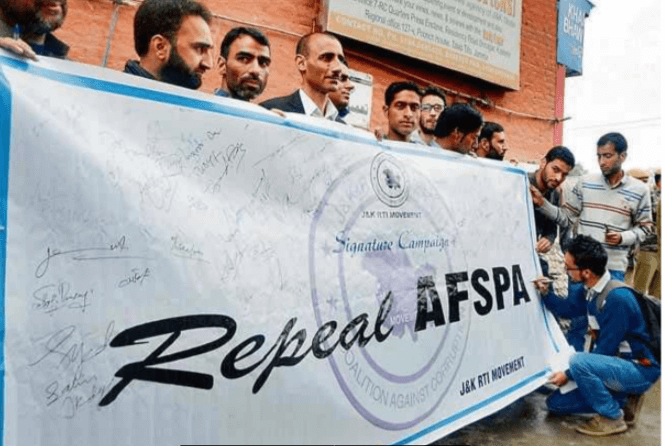Gender Bias at Workplace: Beyond the Wage Gap

Archana Sharma
Researcher“Not everything that is faced can be changed. But nothing can be changed until it is faced.”
— James Baldwin
Gender discrimination has many faces. Some are more commonly known and seen, like unequal pay and sexual harassment, and then there are others which have equal, if not worse effects for women. These include disproportionate performance reviews, leading to less promotions and eventually missing out on senior management positions, otherwise known as the glass ceiling effect. Other examples include less supportive superiors, judgemental behaviour towards women who dress a certain way, outspoken females and even married or pregnant women. Such overt forms of biases, particularly ones that need adherence to the norms of a patriarchal society, have historically hindered women’s growth in the professional sphere.
There are many studies which quantify gender-based discrimination and the unequal treatment of men and women in the workplace, by highlighting the pay gap. But this inequality goes beyond the monetary aspects. And though there have been reports highlighting sexual harassment in companies, there is not much evidence or research regarding other forms of gender bias in India. But there is still a lot which can be inferred from the available data.
Data Magnified
Higher education and qualifications usually lead to more economic opportunities, but when it comes to the female workforce, gender discrimination tends to negate those positives as well. According to the “India Discrimination Report 2022” by Oxfam India, discrimination, due to societal and employers’ prejudices, is believed to be the main cause for the low rates of participation of women in the labour force. It says that though discrimination in access to employment has decreased over the decade, the personal endowments, or the educational qualifications of women, have little to no impact on their job prospects.
This can be further seen in the Labour Force Participation Rate (LFPR) for females. LFPR shows the population percentage of the labour force or the active workforce. As per the Periodic Labour Force Survey (PLFS) in India, female LFPR is much worse than that of men. The LFPR in urban areas stood at 73.4% for males but only 21.7% for females, in the July to September quarter PLFS. This was a slight improvement from a year ago. The 2020-21 annual PLFS showed that the all-India female LFPR had increased by 2.3% in 2021 to 25.1%. But this is still a massive decline from the 42.7% rate of 2004-05.
These statistics are important because they help us understand the depth of the issue. The low female LFPR is not just about losing or non-utilising the productive potential of our country. When women participate in the workforce, they are not just increasing their household incomes, but more importantly, by working outside of their homes, these women are helping weaken the societal constraints — Representation Matters!
This works in tandem with another issue of qualified women unwilling to join the workforce due to family responsibilities and the need to conform to social norms. According to a report, published last year, less than one in five women in India are in the workforce, and what’s worse, is that out of the five, four are not only not working but not even looking for work. Add to this the fact that for women, “household constraints trump financial need” while searching for jobs.
Not Just Covid
It can be argued that recent figures may not show the best picture due to Covid lockdowns and exits from the workplace, but it is believed that such exits were temporary. In 2019, the female LFPR in India fell to 20.3%, according to World Bank estimates. These estimates further show that India has one of the lowest female labour force participation rates in the world, with less than a third of the women working or actively looking for a job.
Implicit Bias
One of the main reasons for the discrimination at the workplace is the presence of an implicit bias. Unconscious biases, or implicit biases, are attitudes that are held subconsciously and affect the way individuals feel and think about others around them. In fact, many researchers even say that the true measures of gender bias are much worse than noted in studies because people tend to answer survey questions in a manner that will be viewed favourably by others. Researchers call it the social desirability bias, and it often results in people giving responses they believe are politically correct instead of revealing how they truly feel.
There are many studies which have confirmed that invisible barriers are holding women back, more than sexism itself. There are countless survey-based studies worldwide which included India in the respondent’s pool — all of them reported a few common examples of implicit biases. From the beginning of the hiring process to the very language being used to describe male and female candidates, such implicit biases are always at play. If the job description suggests a demanding role or travelling, then the implied requirement for the role is 24*7 availability and capacity for a lot of travel. The implicit gender bias in such a situation makes this a pro-male position as they have fewer domestic obligations and are usually in a better position to travel given short notice. And once hired, it only gets worse. Everyone has to learn the “acceptable behaviours” and company values when joining an organisation but for women this can be even more challenging due to the norms of a “masculine workplace”. For example, corporate offices expect their employees to work beyond the regular 9-5, but most women have household chores and responsibilities as well and trying to do such “double duty” of both home and office can take a massive toll on anybody. While not an outright discriminatory practice, implied expectations such as these adversely affect women’s appraisals and promotions.
Another example of implicit bias is present in the very terminology used to describe male and female employees. Research found that adjectives such as ‘emotional’, ‘sensitive’, ‘affectionate’ and ‘friendly’ are used to describe women, while ‘ambitious’, ‘self-confident’, ‘tough’ and ‘aggressive’ are used for men. Conversely, words like “ambitious” and “aggressive” imply negative connotations for women as they are viewed as difficult or not being a team player.
Patriarchy at Play
Traditional Indian women are supposed to be subservient and submissive. But if a woman has to succeed in a masculine workplace, she has to deny her gender. She has to be willing to distance herself from “traditional femininity and domestic duties”. This not only makes women lose their identity as they try to “fit in” with the male colleagues, by cracking sexist jokes or partaking in the “not like other girls” narrative but also adds to the already existing gender bias by creating a divide between women themselves.
Another major problem, prevalent in patriarchal societies is how women are taken less seriously in leadership roles. This situation becomes worse when it is the women leaders themselves not supporting other women. The Gender Social Norms Index report by the UNDP revealed that majority of all men and women hold some sort of bias against women. And there are a lot of reports on various online forums where women have complained of harsher treatment by their female counterparts, bordering on bullying and at times, even worse. One reason for such situations is the belief of “me vs her” based on the lack of opportunities for women at mid to senior management levels. Another is about maintaining their image among the male co-workers. But the worst is when women are penalised for supporting other women.
There has been a lot of progress made towards gender equality but discrimination still persists. This is especially seen in organisational structures and practices that favour men. And while there are laws and policies in place to deal with explicit or conscious prejudices, tackling biases that one is not even aware of, could be rather challenging. What’s worse is that many studies show gender bias to still persist in fields that have a good representation of women. In fact, in a lot of situations, it is the very people who think that biases no longer exist, are the ones who might be implicitly perpetuating them. And so, efforts aimed at only increasing the number of women in the workforce, may not solve the problem of gender inequality.
Proper Policies with Enabling Environment
Though, almost all corporate organisations have inclusive and pro-women policies in place, the point to note is that creating such policies is comparatively easy, proper implementation is the more difficult task. Take for example a policy providing flexible working hours for women. This could however backfire, as women making use of this very policy can be labelled as “not interested in their career or that work is not a priority for them”. Such policy implementation, without proper sensitisation, can also impact female employees, their appraisals, promotions and eventually their overall career growth.
There are no easy or short term solutions to the problem of gender bias and discriminatory attitudes. But apart from educating people about such implicit biases, steps like steering away from gender defined roles, speaking against such bias and not taking the easy way out, would empower women and make way for an unbiased workforce in the future.





